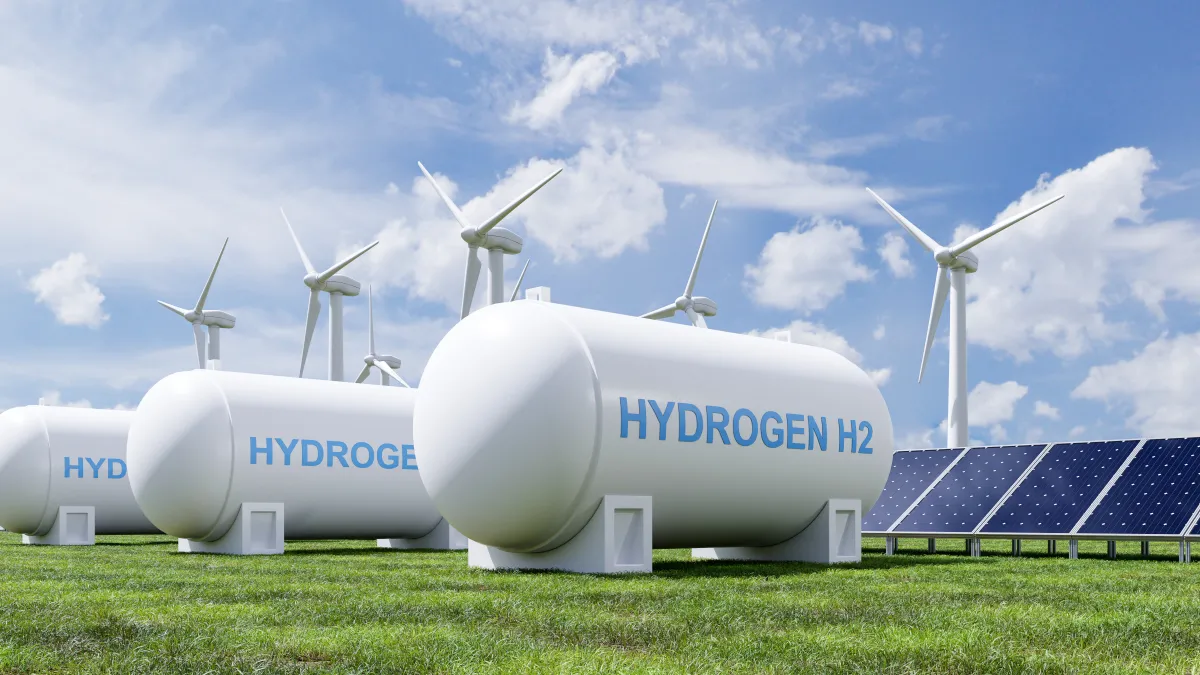Joe Dominguez is president and CEO of Constellation.
One of the most consequential economic and environmental policies contained in the federal Inflation Reduction Act passed last year was a tax credit to spur production of clean hydrogen made with carbon-free electricity. This tax credit will work in tandem with funding in the Infrastructure Investment and Jobs Act to expand production of clean hydrogen, an essential tool in the fight against climate change.
If done right, this policy will put us closer to finally achieving this long-sought solution to climate change. Congress concluded that clean hydrogen is so important because it is the building block of clean liquid fuels that can be used in existing engines or blended with conventional fuels to reduce emissions. For example, researchers in Australia have discovered that blending clean hydrogen with diesel fuel can eliminate more than 80% of the air pollution from heavy duty trucks, tractors and trains with only modest modifications to existing engines.
That’s important because the batteries and electric motors that work so well in passenger cars simply don’t work as well in airplanes, trucks, ships and trains. Solving that problem means we can move faster to address the climate crisis. Clean hydrogen also can be used to make steel and more sustainable fertilizers for agriculture, and it can be used as energy storage in the electric system. The decarbonization possibilities are endless for the most abundant element in the universe.
So, what’s the problem? A handful of observers are trying to undermine congressional intent by asking the administration to prohibit American manufacturers from having equal access to clean hydrogen production.
In simple terms, they argue that owners of existing wind, solar and other clean energy can use their electricity to produce hydrogen and earn a tax credit to make it more affordable, but a manufacturer located just down the road who uses that same clean electricity to produce hydrogen should get nothing. The result is that the nation would have to build costly pipelines through farmlands and forests to move hydrogen to customers when the gas could be made with clean electricity just as easily — and far more economically — at the customer’s own site.
Why would federal law favor clean hydrogen that must be piped or trucked to the user but not hydrogen produced on the manufacturer’s site?
The basis of the argument appears to hinge on the notion of “additionality;” the idea that diverting existing clean electricity to make hydrogen will cause emissions to increase by forcing grid operators to draw more heavily upon polluting energy sources to make up the difference. This is the same short-sighted argument made by critics of electric vehicles, who claim that diverting electricity to power transportation will increase demand for polluting sources of electricity, slowing progress on carbon emissions.
What these arguments get wrong is that there isn’t an either/or solution to climate change. We have to do everything all at once or we will never meet our climate goals. And a closer look reveals that viewing emissions as a snapshot in time ignores the many other policies that Congress and state policymakers are putting in place to grow clean energy resources in anticipation of the need for hydrogen, electric vehicles and other climate solutions. Together with demand from consumers for more clean energy, these policies are driving billions of dollars in investments toward further accelerating grid decarbonization.
Undaunted, the “additionality” advocates want the U.S. Treasury Department to ignore these factors and deny manufacturers the option of making hydrogen on site with clean electricity delivered using the power grid. That is not what Congress intended. Asking Treasury to adopt rules that allow existing clean electricity producers to make hydrogen at their own sites and earn a tax credit while denying manufacturers using that same electricity to make hydrogen at a site nearby or even miles away is illogical and silly.
To be sure, Treasury has a big role to play in ensuring that only clean electricity is used to make hydrogen. It should require clean hydrogen producers to prove they are powered with regionally-produced carbon-free electricity every hour of the day, regardless of where the hydrogen is created. This approach would meet the standard Congress intended and spur investment in this essential tool in the climate fight.
The rules currently being drafted by the administration will determine how quickly we can build the clean hydrogen infrastructure and market needed to finally reduce emissions in large, hard-to-decarbonize sectors of the economy. If they get it right, we can deliver exactly what this moment calls for — accelerated investments in clean hydrogen today to reach economy-wide net zero emissions by 2050.






















